Search
manufacturing
.jpg)
Interim, In Situ Additive Manufacturing Inspection
The in situ inspection technology for additive manufacturing combines different types of cameras strategically placed around the part to monitor its properties during construction. The IR cameras collect accurate temperature data to validate thermal math models, while the visual cameras obtain highly detailed data at the exact location of the laser to build accurate, as-built geometric models. Furthermore, certain adopted techniques (e.g., single to grouped pixels comparison to avoid bad/biased pixels) reduce false positive readings.
NASA has developed and tested prototypes in both laser-sintered plastic and metal processes. The technology detected errors due to stray powder sparking and material layer lifts. Furthermore, the technology has the potential to detect anomalies in the property profile that are caused by errors due to stress, power density issues, incomplete melting, voids, incomplete fill, and layer lift-up. Three-dimensional models of the printed parts were reconstructed using only the collected data, which demonstrates the success and potential of the technology to provide a deeper understanding of the laser-metal interactions. By monitoring the print, layer by layer, in real-time, users can pause the process and make corrections to the build as needed, reducing material, energy, and time wasted in nonconforming parts.
information technology and software
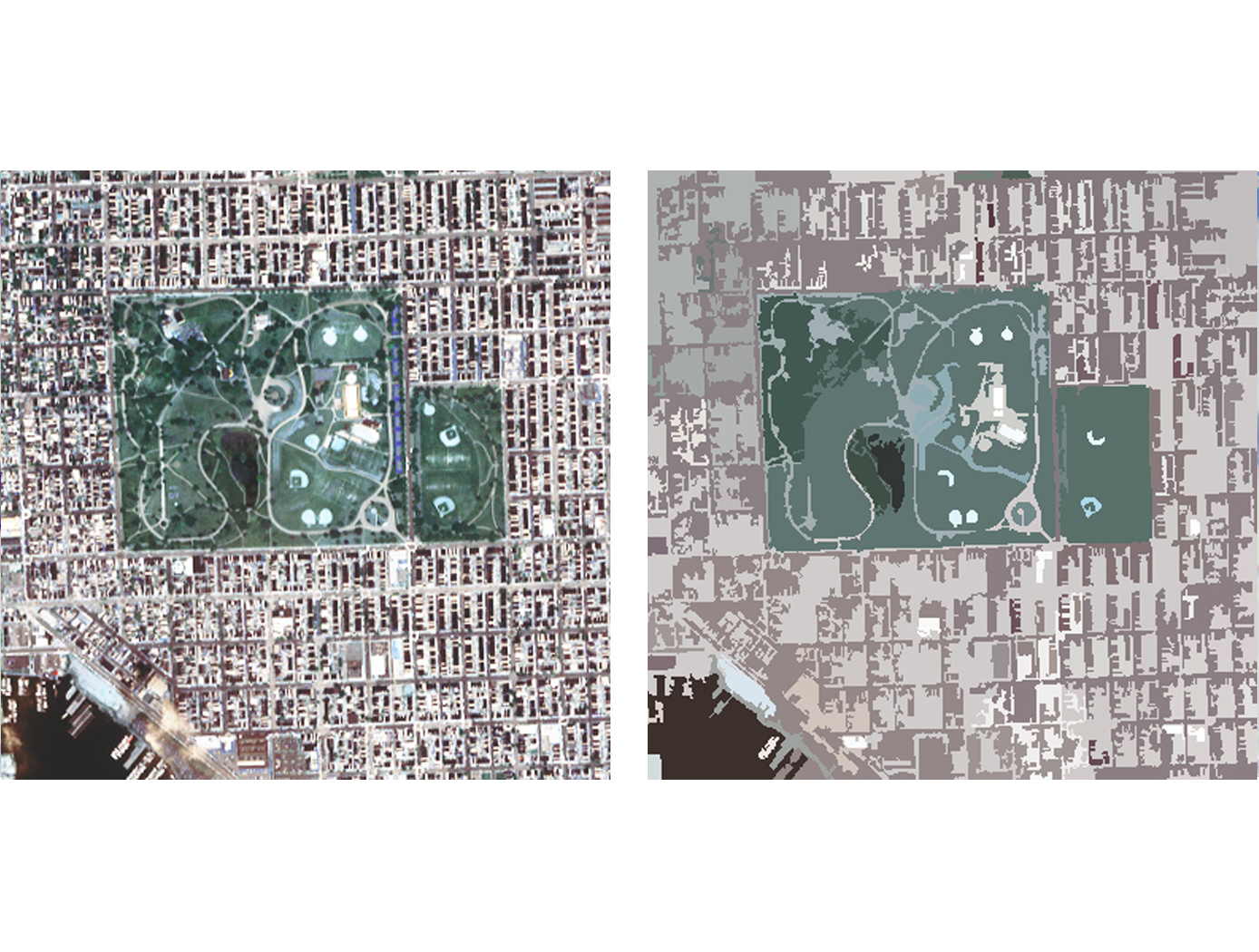
Hierarchical Image Segmentation (HSEG)
Currently, HSEG software is being used by Bartron Medical Imaging as a diagnostic tool to enhance medical imagery. Bartron Medical Imaging licensed the HSEG Technology from NASA Goddard adding color enhancement and developing MED-SEG, an FDA approved tool to help specialists interpret medical images.
HSEG is available for licensing outside of the medical field (specifically for soft-tissue analysis).
optics
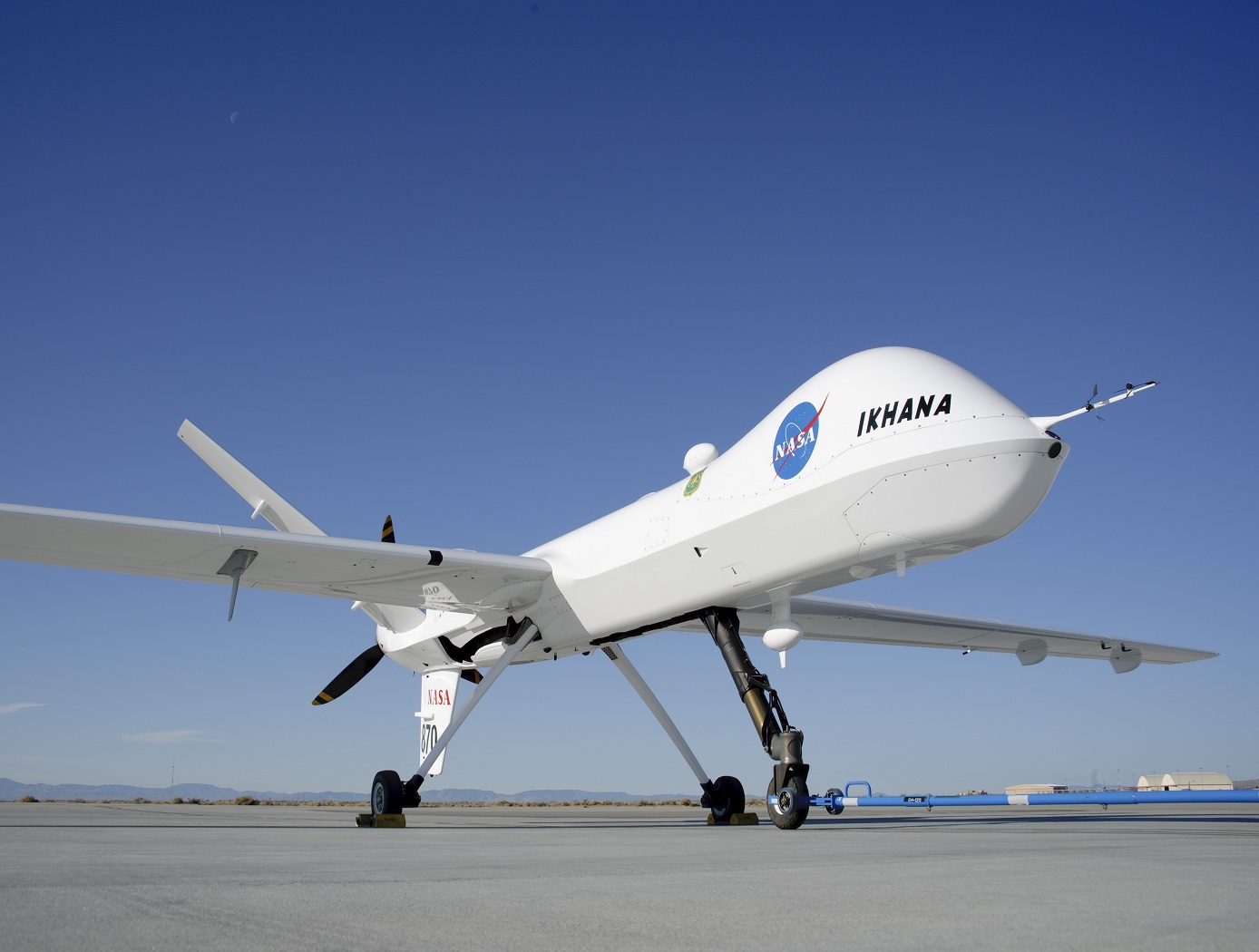
Spatial Standard Observer (SSO)
The Spatial Standard Observer (SSO) provides a tool that allows measurement of the visibility of an element, or visual discriminability of two elements. The device may be used whenever it is necessary to measure or specify visibility or visual intensity. The SSO is based on a model of human vision, and has been calibrated by an extensive set of human test data. The SSO operates on a digital image or a pair of digital images. It computes a numerical measure of the perceptual strength of the single image, or of the visible difference between the two images. The visibility measurements are provided in units of Just Noticeable Differences (JND), a standard measure of perceptual intensity.
A target that is just visible has a measure of 1 JND. The SSO will be useful in a wide variety of applications, most notably in the inspection of displays during the manufacturing process. It is also useful in for evaluating vision from unpiloted aerial vehicles (UAV) predicting visibility of UAVs from other aircraft, from the control tower of aircraft on runways, measuring visibility of damage to aircraft and to the shuttle orbiter, evaluation of legibility of text, icons or symbols in a graphical user interface, specification of camera and display resolution, inspection of displays during the manufacturing process, estimation of the quality of compressed digital video, and predicting outcomes of corrective laser eye surgery.
sensors

Method and Device for Biometric Verification and Identification
The advantage of using cardiac biometrics over existing methods is that heart signatures are more difficult to forge compared to other biometric devices. Iris scanners can be fooled by contact lenses and sunglasses, and a segment of the population does not have readable fingerprints due to age or working conditions. Previous electrocardiographic signals employed a single template and compared that template with new test templates by means of cross-correlation or linear-discriminant analysis.The benefit of this technology over competing cardiac biometric methods is that it is more reliable with a significant reduction in error rates. The benefit of this technology is that it creates a probabilistic model of the electrocardiographic features of a person instead of a single signal template of the average heartbeat. The probabilistic model described as Gaussian mixture model allows various modes of the feature distribution, in contrast to a template model that only characterizes a mean waveform. Another advantage is that the model uses both physiological and anatomical characterization of the heart, unlike other methods that mainly use only physiological characterization of the heart. By combining features from different leads, the heart of the person is better characterized in terms of anatomical orientation because each lead represents a different projection of the electrical vector of the heart. Thus, employing multiple electrocardiographic leads provides a better performance in subject verification or identification.
Sensors
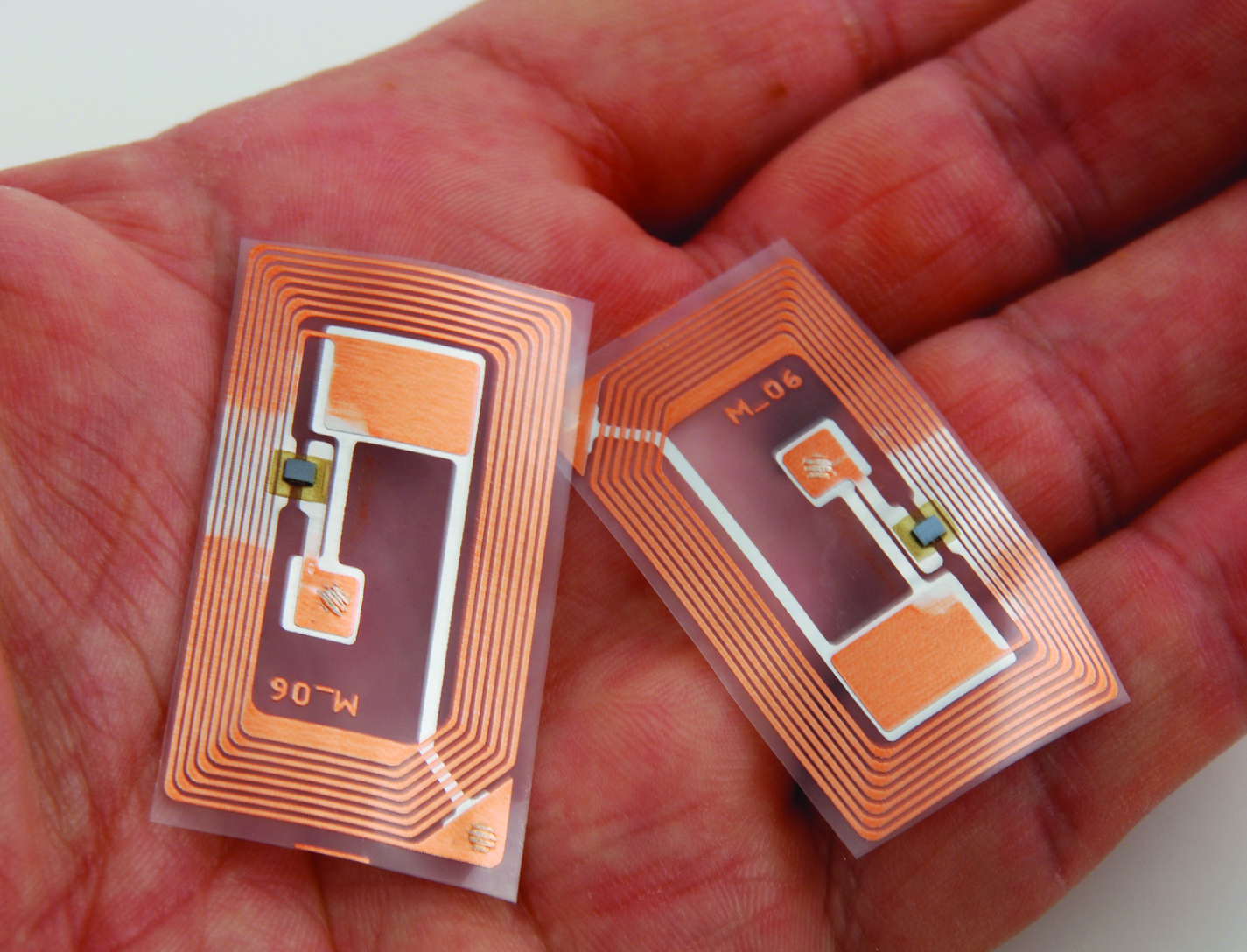
Passive Smart Container
Passive Smart Container system comprises four major components: RFID circuits embedded in or around the container, an antenna and RF distribution system, and an interrogator/reader. The system uses passive RFID circuits placed on a bulk item container to track consumption and quantify items as the items are removed, added or replaced in the container. The antenna is strategically integrated with the lid or elsewhere in or around the container and is constantly coupling RFID signals to/from the RFID circuits. The circuits reply with information regarding the fill level in the container. A processor connected to the reader/interrogator can infer the fill level according to which RFID circuits respond and the magnitude and phase of the returned signals. The technology is compatible with the EPCglobal Class-1 Generation-2 RFID standard. This setup can be modified to track all kinds of items, large and small, making this technology suitable and applicable to an array of commercial fields.
RFID is a disruptive technology that has made a large impact on several industries, especially in supply chain and asset management. Passive Smart Container is well positioned to tap into this growing market. Its ability to account for discrete items as well as liquids and bulk goods that were deemed impossible or impractical to tag makes this technology relevant for an array of applications and industries.
environment

Microwave-Based Water Decontamination System
Bacterial contamination of water systems used in microgravity is a major issue for NASA because biofilms can clog or interfere with water system functions and bacterial ingestion can be harmful to astronaut health. To address this problem, NASA innovators developed a microwave based technology to purify contaminated water by eradicating and eliminating bacteria that grows in systems that generate potable water, in equipment utilizing cooling loops and heat exchangers, and removing bacterial contamination that is present on a variety of surfaces. This decontamination system is chemical free and requires minimal to no consumables.
Initial testing identified a specific microwave frequency band and exposure times for killing bacteria (Burkholderia cepacia) and biofilm. Test results show that exposing static water to microwave energy for 90 seconds can effectively kill waterborne bacteria and biofilm within a water filtration system. Additional testing, using a circulating water test bed, demonstrated that microwave energy at the selected frequency can effectively eradicate waterborne bacteria within 30 seconds. This technology could be further developed into a portable, lightweight system for use in remote locations as well as commercial space applications. The microwave decontamination system could also be added to existing water systems to extend the life of the system.
information technology and software

Inductive Monitoring System
The Inductive Monitoring System (IMS) software provides a method of building an efficient system health monitoring software module by examining data covering the range of nominal system behavior in advance and using parameters derived from that data for the monitoring task. This software module also has the capability to adapt to the specific system being monitored by augmenting its monitoring database with initially suspect system parameter sets encountered during monitoring operations, which are later verified as nominal. While the system is offline, IMS learns nominal system behavior from archived system data sets collected from the monitored system or from accurate simulations of the system. This training phase automatically builds a model of nominal operations, and stores it in a knowledge base. The basic data structure of the IMS software algorithm is a vector of parameter values. Each vector is an ordered list of parameters collected from the monitored system by a data acquisition process. IMS then processes select data sets by formatting the data into a predefined vector format and building a knowledge base containing clusters of related value ranges for the vector parameters. In real time, IMS then monitors and displays information on the degree of deviation from nominal performance. The values collected from the monitored system for a given vector are compared to the clusters in the knowledge base. If all the values fall into or near the parameter ranges defined by one of these clusters, it is assumed to be nominal data since it matches previously observed nominal behavior. The IMS knowledge base can also be used for offline analysis of archived data.
mechanical and fluid systems
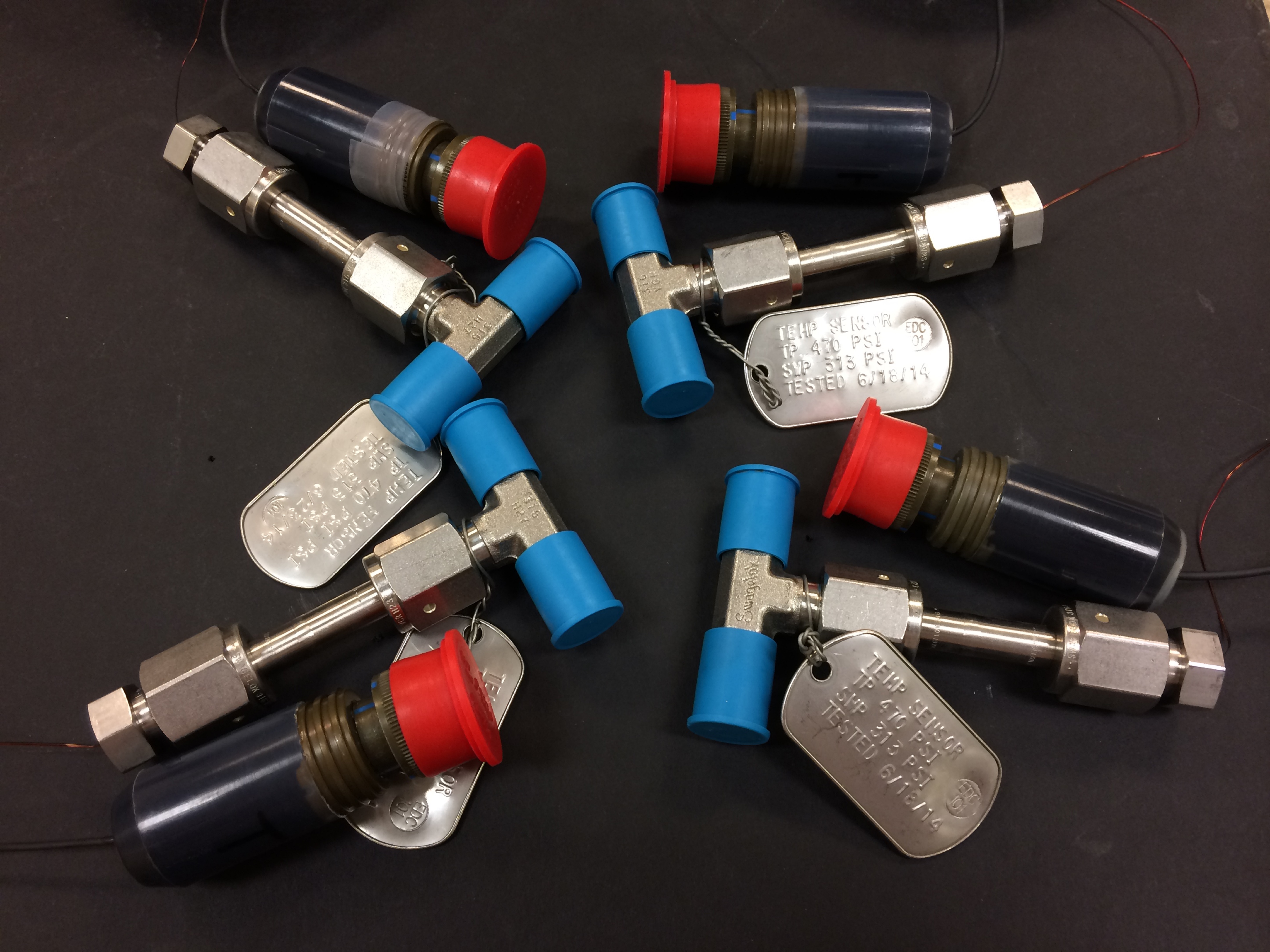
Feedthrough for Severe Environments and Temperatures
Space and ground launch support related hardware often operate under extreme pressure, temperature, and corrosive conditions. When dealing with this type of equipment, it is frequently necessary to run wiring, tubes, or fibers through a barrier separating one process from another with one or both operating in extreme environments. Feedthroughs used to route the wiring, tubes, or fibers through these barriers must meet stringent sealing and leak tightness requirements.
This affordable NASA feedthrough meets or exceeds all sealing and leak requirements utilizing easy-to-assemble commercial-off-the-shelf hardware with no special tooling. The feedthrough is a fully reconfigurable design; however, it can also be produced as a permanent device. Thermal cycling and helium mass spectrometer leak testing under extreme conditions of full cryogenic temperatures and high vacuum have proven the sealing capability of this feedthrough with or without potting (epoxy fill) on the ends. Packing material disks used in the construction of the device can be replaced as needed for rebuilding a given feedthrough for another job or a different set of feeds if potting is not used for the original feedthrough build. (Potting on one or both sides of the sleeve provides double or triple leak sealing protection). Variable Compression Ratio (VCR) connectors were adapted for the pressure seal on the feedthrough; however, any commercial connector can be similarly adapted. The design can easily be scaled up to larger (2" diameter) and even very large (12" or more) sizes.
mechanical and fluid systems
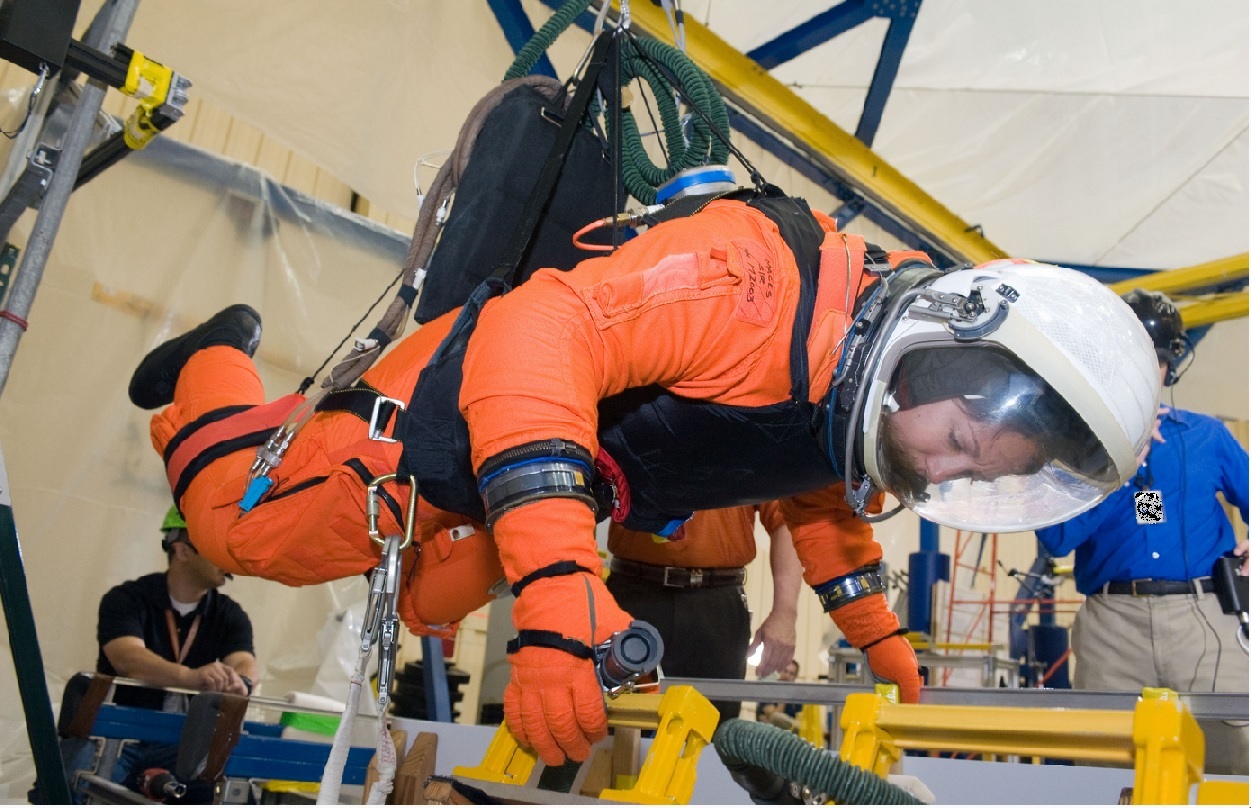
Full-Size Reduced Gravity Simulator For Humans, Robots, and Test Objects
The Active Response Gravity Offload System (ARGOS) provides a simulated reduced gravity environment that responds to human-imparted forces. System capabilities range from full gravity to microgravity. The system utilizes input/feedback sensors, fast-response motor controllers, and custom-developed software algorithms to provide a constant force offload that simulates reduced gravity.
The ARGOS system attaches to a human subject in a gimbal and/or harness through a cable. The system then maintains a constant offload of a portion of the subjects weight through the cable to simulate reduced gravity. The system supports movements in all 3 dimensions consistent with the selected gravity level. Front/back and left/right movements are supported via a trolley on an overhead runway and bridge drive system, and up/down movements are supported via a precisely positioned cable. The system runs at a very high cycle rate, and constantly receives feedback to ensure the human subjects safety.
power generation and storage
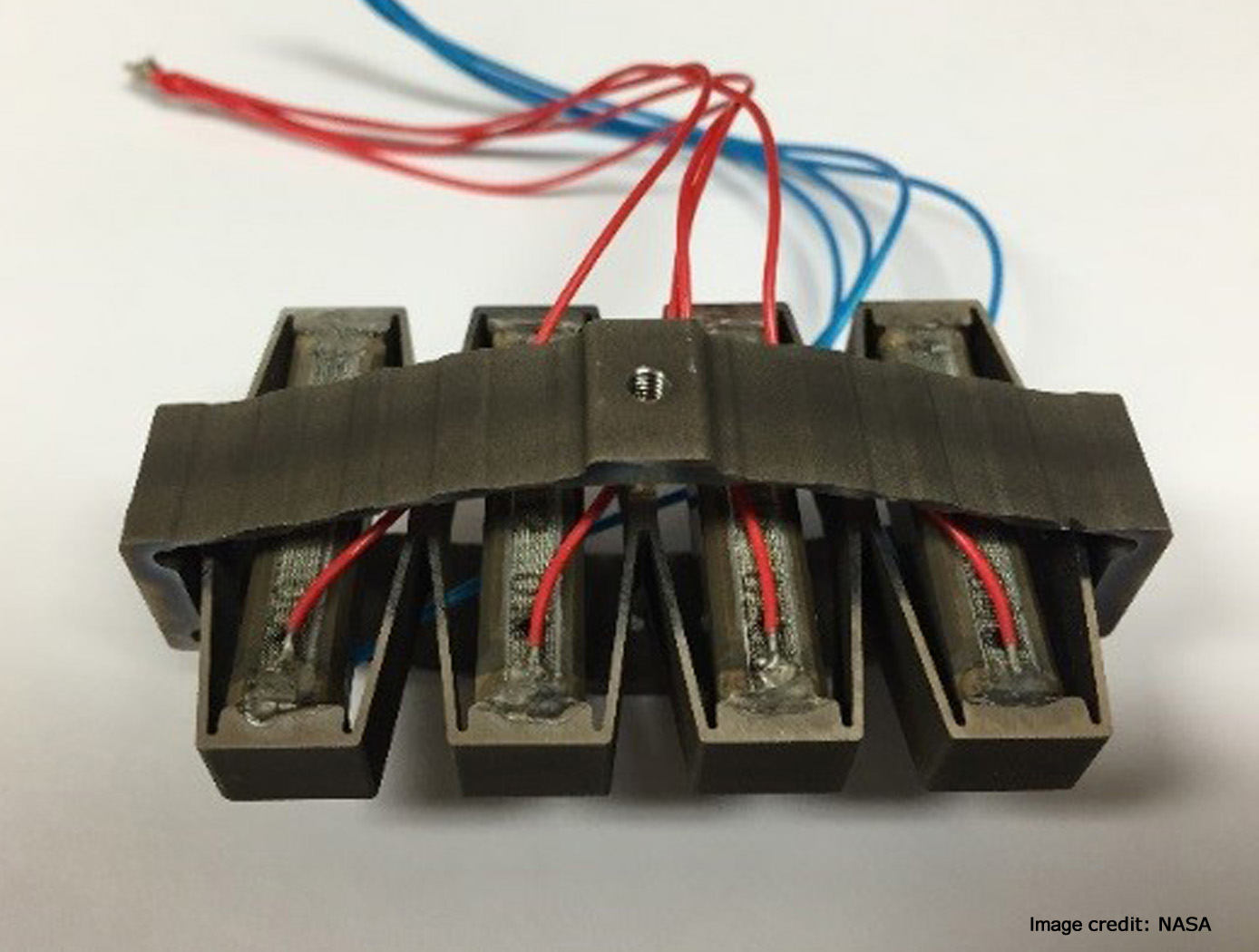
Relaxor Piezoelectric Single Crystal Multilayer Stacks for Energy Harvesting Transducers (RPSEHT)
Energy management is one of the most challenging issues in the world today. Accordingly, various energy harvesting technologies have gained attention, including harvesting energy from ambient vibration sources using piezoelectric materials. However, conventional piezoelectric energy harvesting transducer (PEHT) structures have effective piezoelectric constants that are lower than about 10^4 pC/N, (resonant mode). These low piezoelectric constants lead to conventional PEHTs not being able to harvest electric power effectively. Further, for a specific vibration/motion source, it would be advantageous to maximize the mechanical energy captured from the vibration structure into the piezoelectric device and to convert a greater fraction of that mechanical energy into electrical energy more efficiently.
This invention is a system and method using multistage force amplification of piezoelectric energy harvesting transducers (MFAPEHTs) to increase the effective piezoelectric constant to >10^6 pC/N and to increase the mechanical energy input to the device. The invention utilizes 33 mode PZT to permit maximum coupling between the input mechanical energy with the piezoelectric material, and multilayer construction of single crystal PMN-PT material to significantly amplify the voltage/charge generation and storage from the applied mechanical force.



